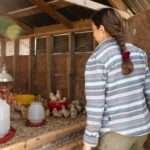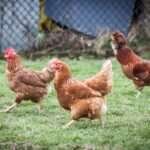When we think of chickens, the image that often comes to mind is of birds meandering around the barnyard, pecking at the ground, and happily clucking away. Many people believe that chickens are entirely flightless, destined to stay grounded throughout their lives. However, this perception couldn’t be further from the truth. Chickens do possess the ability to fly, albeit in a limited capacity compared to other bird species.
The Flight Capability of Chickens:
Debunking the Myth: Can Chickens Fly at All? The belief in chickens’ flightlessness is a common misconception perpetuated by their relatively short wings and robust body structure. While chickens may not be soaring high in the sky like eagles, they do have the physical capability to achieve short bursts of flight when necessary.
Chickens belong to the Gallus genus, which includes the red junglefowl, their wild ancestor. Red junglefowl are agile flyers, known to fly up to 10-15 feet in the air to escape from predators or find roosting spots in trees. Over time, through domestication and selective breeding, chickens have developed less powerful flight muscles and have become more suited to ground-dwelling.
Understanding the Limitations of Chicken Flight: Although chickens have the anatomical structure to fly, their flight abilities are limited compared to many other bird species. Their heavy body and short wings hinder their ability to sustain long periods of flight or achieve significant heights. Instead, chickens rely on their strong legs and wings to run, hop, and glide short distances to escape from perceived threats.
Chickens’ Wing Anatomy and Its Influence on Flight: Chickens have primary flight feathers, located at the ends of their wings, which are responsible for providing lift during flight. However, these feathers are relatively short, and chickens lack the keel bone found in the breastbone of birds known for powerful flight, like ducks or geese.
As a result, chickens rely on their wings primarily for balance and controlled descents rather than true flight. They can flutter to gain elevation briefly but are not capable of sustained and powerful flight.
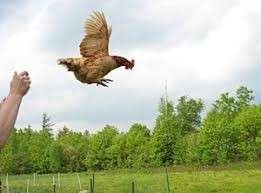
How Far and How High Can Chickens Fly?
Examining the Flight Distances of Various Chicken Breeds: The flying capabilities of chickens can vary depending on the breed. Lighter and more agile breeds, such as Leghorns and gamefowl, tend to have better flight abilities compared to heavier breeds like Orpingtons or Cochins. Lighter breeds may fly short distances of up to 10-15 feet to roost in trees or escape from predators.
Estimating the Maximum Height Chickens Can Reach During Flight: In most cases, chickens do not fly to significant heights. Even the most adept flyers among chicken breeds seldom fly higher than a few feet off the ground. Their flight is more akin to gliding and controlled descents rather than soaring at great heights.
Records of Impressive Flying Feats by Chickens: In rare cases, chickens have been known to achieve remarkable flying feats. Some adventurous chickens have flown over fences and barriers that might be surprising for their owners. These cases are exceptions, and most chickens are content to remain closer to the ground, where they feel safe and secure.
The Potential Risks of Chicken Flight:
The Dangers of High-Flying Chickens in Urban and Rural Settings: While most chickens are not natural escape artists, there are situations where their flight capabilities can pose risks. In urban settings, chickens escaping from their coops might wander into busy streets or neighboring properties, leading to potential accidents or conflicts with neighbors. In rural areas, free-ranging chickens might encounter predators, such as foxes or hawks, increasing the likelihood of injury or predation.
Impacts of Flight on Chickens’ Physical Health and Well-Being: For chickens, flying is a physically demanding activity that can place stress on their bodies, particularly their legs and wings. Frequent or unnecessary flight attempts can lead to muscle strains, joint injuries, or fractures. Moreover, chickens are not as skilled as other bird species in navigating the air, which increases the risk of collisions or accidents during flight.
Chicken Behaviors That May Lead to Escape Attempts: Certain behaviors may prompt chickens to attempt escape. Factors such as overcrowding, inadequate space, or environmental stressors can trigger flight responses in chickens. Addressing these issues within the coop can significantly reduce the likelihood of escape attempts.
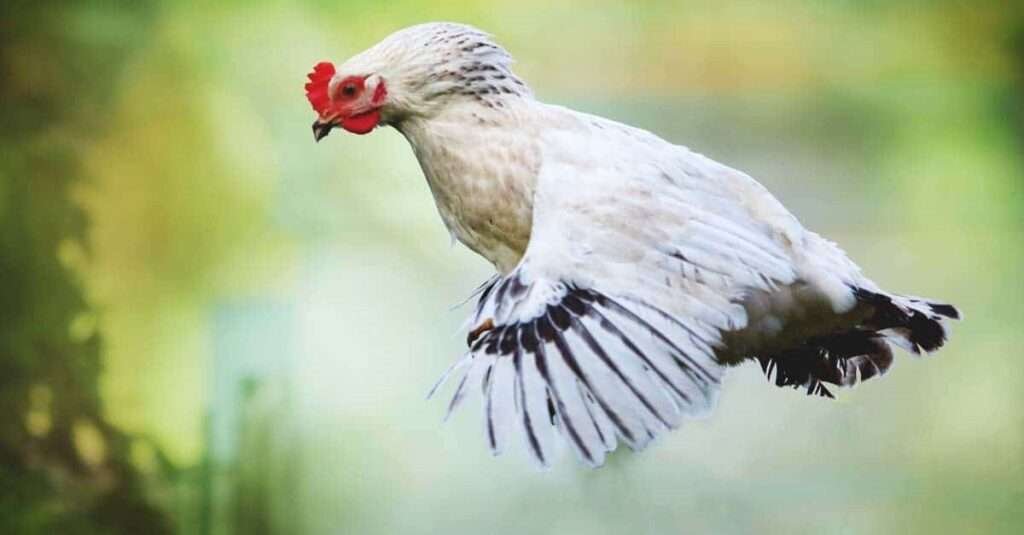
Preventing Chickens from Flying Out of the Coop:
Understanding the Need for Secure Coop Design: A well-designed coop plays a vital role in preventing chickens from flying out and ensuring their safety and security. Choose a coop with a roof or an enclosed run to limit the vertical space available for flight. Additionally, ensure that all openings, including doors and windows, are properly sealed to prevent escape.
Identifying Common Escape Routes and Weak Points in the Coop: Conduct a thorough inspection of the coop to identify any potential escape routes or weak points that chickens might exploit. Patch up holes or gaps in the coop’s structure and ensure that the fencing is secure and adequately tall to prevent flight over barriers.
Selecting the Right Coop Size and Design to Discourage Flying: The size and layout of the coop can influence chicken behavior. Providing ample space for chickens to move around and engage in natural behaviors reduces their desire to escape. Opt for a coop design that encourages chickens to spend more time inside, feeling safe and content.
Wing Clipping: A Safe and Temporary Solution:
The Concept of Wing Clipping for Chickens: Wing clipping is a common practice among chicken keepers to prevent chickens from achieving sustained flight. It involves trimming the primary flight feathers on one wing, which creates an imbalance during flight attempts and discourages chickens from attempting to fly.
Understanding the Process of Wing Clipping and Its Effects: Wing clipping is a painless and temporary procedure that does not harm chickens when done correctly. By clipping the primary flight feathers on one wing, the chicken’s balance is disrupted, making it difficult for them to achieve lift during flight.
Best Practices for Wing Clipping to Prevent Escape: Wing clipping should be done with care and precision. It is essential to ensure that only the primary flight feathers are trimmed, and the procedure is not done too close to the wing’s base, as this can cause discomfort. Seek guidance from a veterinarian or experienced chicken keeper to learn the proper technique.
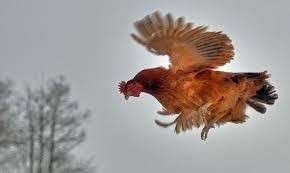
Additional Strategies to Prevent Escape:
Raising Fences and Barriers to Discourage Flight: To prevent chickens from flying over fences or barriers, raise the height of the fencing to a level that exceeds their flight capabilities. This may involve adding additional wire or extending the height of existing fences.
Creating a Chicken-Friendly Environment to Reduce Escape Attempts: A well-designed and enriched environment can minimize the desire to escape. Provide plenty of space, perches, and engaging activities within the coop to keep chickens content and reduce stress.
Providing Ample Space and Enrichment Activities in the Coop: Ensuring that the coop offers enough space for chickens to roam, explore, and engage in natural behaviors can reduce the likelihood of escape attempts. Provide interesting objects and stimuli to keep them occupied and happy.
Ensuring Safety and Responsibility:
Educating Children About Chicken Care and Safety: If children are involved in caring for chickens, it is essential to educate them about responsible chicken handling and safety practices. This includes not attempting to throw or handle chickens roughly, as it can cause harm to the birds.
The Importance of Supervision to Prevent Mishandling of Chickens: Supervise interactions between children and chickens to ensure that the birds are treated with care and respect. Young children should always be supervised by an adult when handling chickens to prevent accidents and injury.
Creating a Harmonious and Safe Environment for Chickens and Caretakers: By implementing preventive measures, providing proper care, and promoting responsible chicken-keeping practices, we can create a harmonious and safe environment for both chickens and caretakers. Remember that chickens are living beings deserving of care and consideration.
So, Can Chickens Fly?
While chickens do have the capability to fly, their flight abilities are limited and can be effectively managed to prevent escape. Understanding the natural behaviors and physical limitations of chickens is crucial in providing them with a secure and nurturing environment. Whether through wing clipping or other preventive strategies, responsible chicken keepers can ensure their feathered friends remain happy, healthy, and protected within their coops. By striking a balance between safety and freedom, we can foster a positive relationship with our chickens while respecting their natural instincts.



